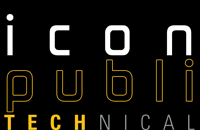
By Athena Alexopoulou, Panagiota Mariolopoulou, Katerina Gerakari, Alexandra Chatzistylianou, Eleni Psalti
Icon study method
Wednesday 4 March 2009, by Icon Network
![]() The use of scientific methods aiming at the study of works of art and archaeological objects began many years ago as a highly specialized activity, which means that it usually seems more luxurious than it really is.
The use of scientific methods aiming at the study of works of art and archaeological objects began many years ago as a highly specialized activity, which means that it usually seems more luxurious than it really is.
Every researcher who has to deal in one way or another with the preservation of cultural heritage should take into serious consideration the diagnosis of the state of preservation, the study of the technique and materials of manufacture, the documentation of the authenticity and the dating of works of art and archaeological objects.
![]() The abundance of scientific tools provided by modern technology has extended the field of application of “natural” methods in diagnosing works of art, has minimized the negative effects of their use, and has helped to create user-friendly applications that lead to fast and direct experimental results.
The abundance of scientific tools provided by modern technology has extended the field of application of “natural” methods in diagnosing works of art, has minimized the negative effects of their use, and has helped to create user-friendly applications that lead to fast and direct experimental results.
The methodology of scientific study follows a flow chart, presenting the method of study of a work of art, which begins with the application of non-destructive methods and continues with the application of analytical methods that require sampling.
The proposed flow chart has first to give prominence to the priority of application of non-destructive methods and second to insure the documentation of conclusions that result from the combined, comparative character of the experimental results.
Greater emphasis is placed on non-destructive techniques because of their non-destructive character, and also because they provide a great deal of information about the state of preservation of works of art.